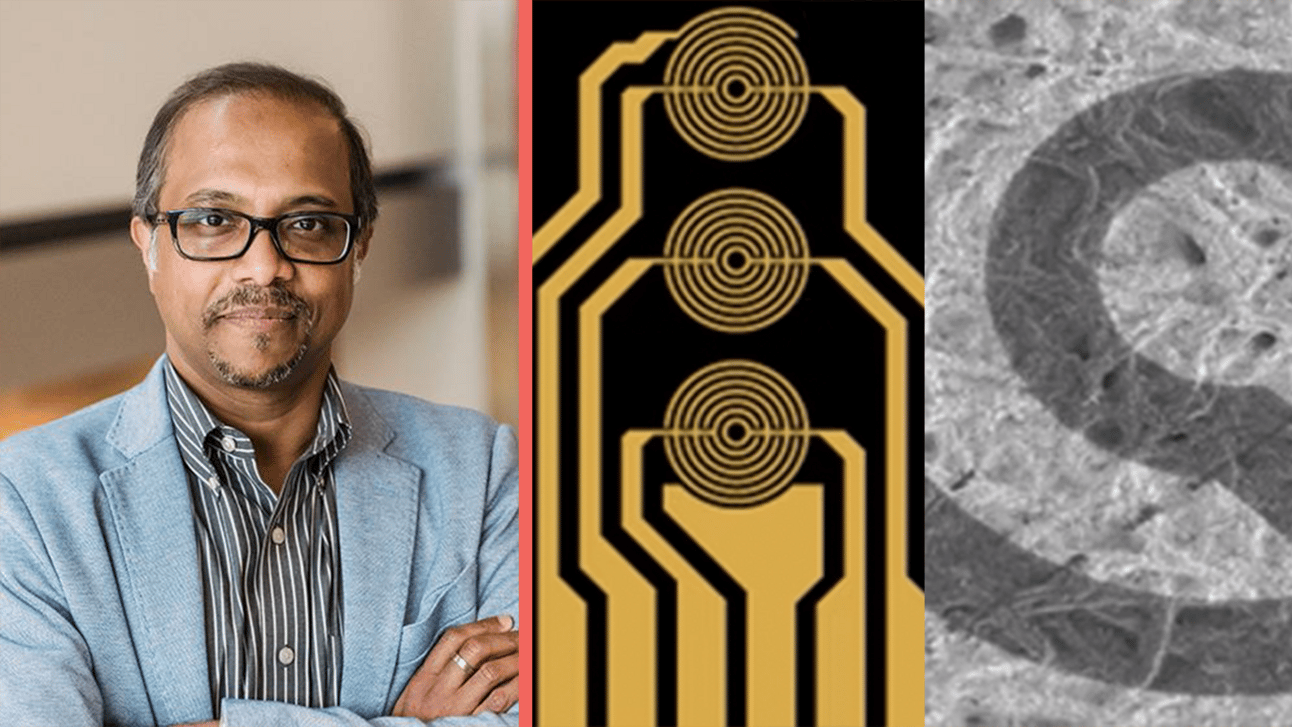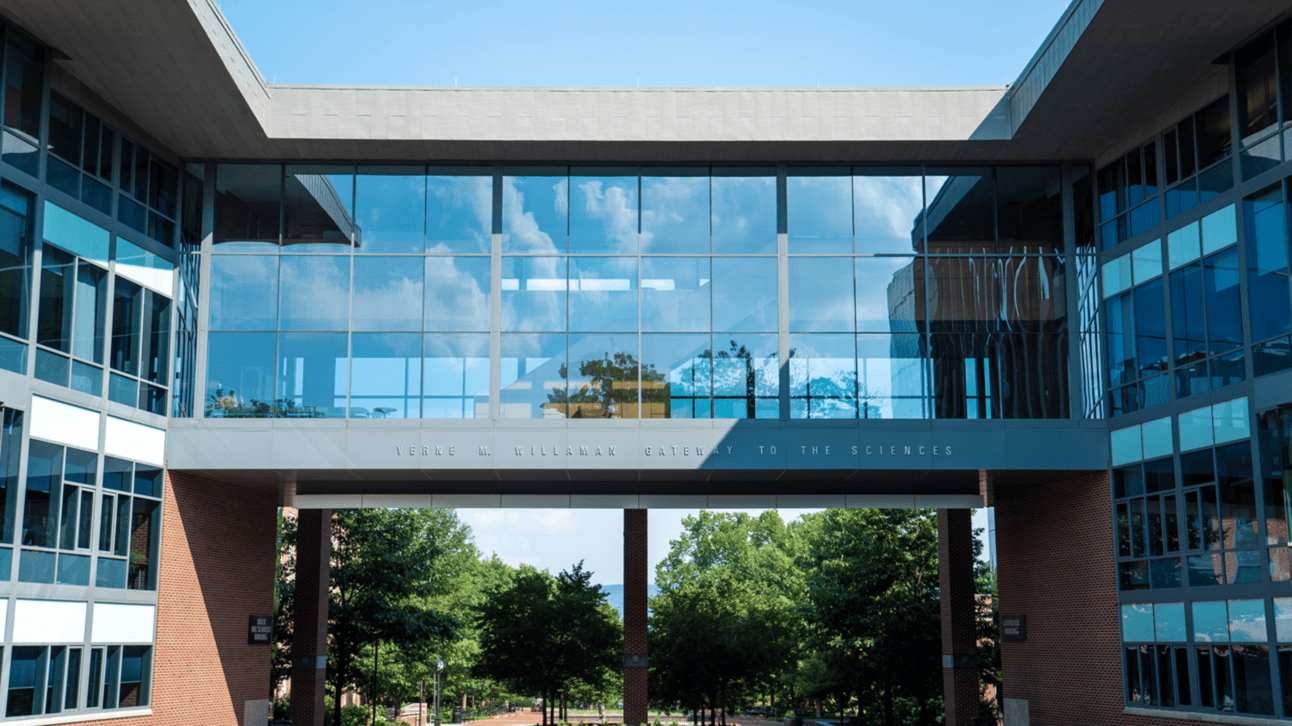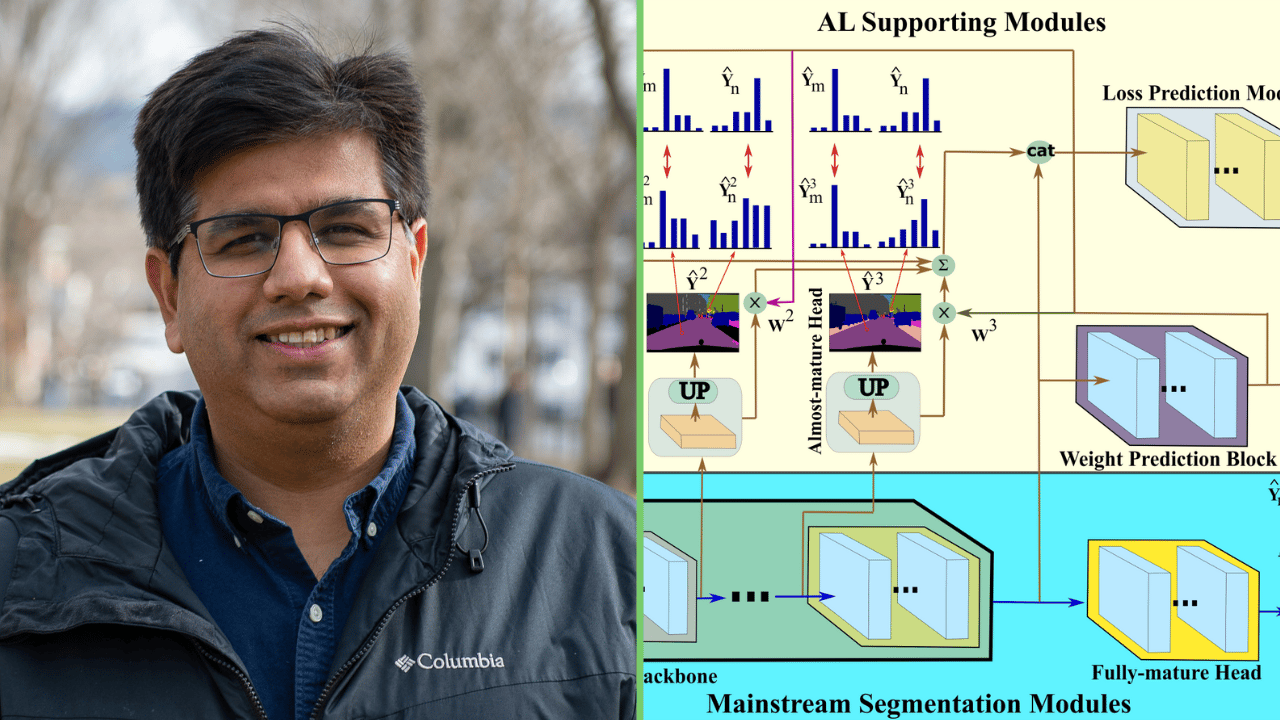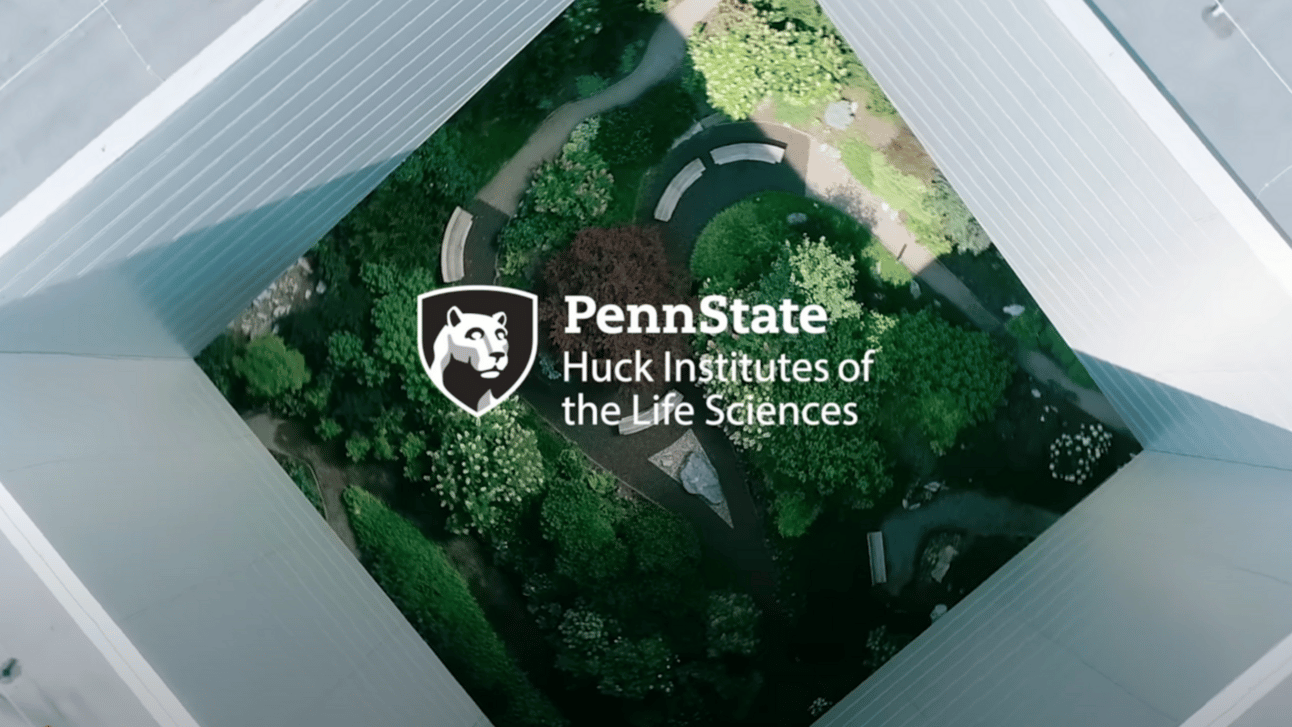Huck Institutes News | June 2025
Our feature this month dives into the many-faceted research of Dipanjan Pan, Huck Professor of Nanomedicine and Professor of Materials Science and Engineering and Nuclear Engineering. With a host of innovations that have spawned five startup companies to date, Pan’s passion for team-based science and drive to make a difference in peoples’ lives epitomize our mission here at Huck.
★ Feature Story
Advancing nanomedicine from bench to bedside
As biomedical challenges grow more complex, Penn State’s Dipanjan Pan is pioneering a multifaceted approach to nanomedicine that spans basic research, clinical translation and entrepreneurial deployment.
A chemist by training and innovator by instinct, Pan holds the Huck Chair Professorship in Nanomedicine with dual faculty appointments in Materials Science and Engineering and Nuclear Engineering. Since arriving in 2022, he has emerged as a central figure in the Huck Institutes of the Life Sciences’ mission to foster cross-disciplinary collaboration with real-world impact.
“I started as a chemist, but I quickly realized that no single discipline could solve the kinds of problems we face in human health. The future lies in team science; many fields working together on a common goal.”
Pan’s research agenda is built around three pillars: advanced biomedical imaging, image-guided drug delivery and point-of-care biosensing. Together, these domains address the continuum from early detection to targeted treatment, he said, while also opening new avenues for low-cost diagnostics and global health equity.
One of what Pan called his most promising platforms uses a coating of 2D nanomaterials on the surface of a non-invasive biosensor, which can be tailored to detect various molecules that could indicate specific diseases in sweat or other naturally shed bodily fluids without drawing blood. His lab is currently validating a point-of-care device that uses menstrual effluent to detect specific proteins that indicate endometriosis and cervical cancer risk — an innovation that could improve women’s health diagnostics globally.
“Dipanjan is one of those rare people who not only excels at doing the groundbreaking science but also has a phenomenal track record of translating that science into tangible results with real impact. We can’t wait to see what he does next.”
Slice of Life
The Huck Institutes of the Life Sciences has launched our 2025-26 seed grant program, issuing a call for proposals from Huck-affiliated researchers across the University. Huck seed grants aim to foster innovative, interdisciplinary and collaborative life sciences research.
While other topics in life sciences will also be considered, our seven new thematic priorities will receive preferential consideration by the review panel. Full descriptions are available here.
The future of electroencephalography (EEG) monitoring may soon look like a strand of hair. In place of the traditional metal electrodes, a web of wires and sticky adhesives, a team of researchers from Penn State created a hairlike device for long-term, non-invasive monitoring of the brain’s electrical activity. The lightweight and flexible electrode attaches directly to the scalp and delivers stable, high-quality recordings of the brain’s signals.
What do chickens and people with a common reproductive disorder have in common? More than one might think — and a widely-used diabetes medication might just be the surprising link. At Penn State, researchers discovered that metformin, a drug usually prescribed for type 2 diabetes and polycystic ovary syndrome (PCOS) in humans, can actually help chickens lay more eggs.
Scientists at the University’s Sensory Evaluation Center examined how increasing "oral burn"— the spicy taste from ingredients like chili pepper — affects how much food people consume during a meal. The findings, available online now and slated to publish in the October issue of the journal Food Quality and Preference, suggest that making the meal slightly spicier led participants to eat less, consuming fewer calories.
Accolades & Awards
The Huck has awarded short-term financial support to select ongoing life sciences research projects facing unexpected funding cancellations or delays due to shifting federal budgets or grant processing lags. Announced in April, our Bridge Funding Program awards provide up to $20,000 to, as the name suggests, bridge the gap until externally awarded funds are processed.
Four recipients were selected based on the urgency of their research. One project seeks to help growers improve management of their farms by understanding how microbial dynamics in agricultural soils influence greenhouse gas production. A second project is examining how processes in plant cells can be leveraged for biofuel production. The third project is providing novel insights into how malaria parasites proliferate and cause illness, while the fourth project is supporting undergraduate training in technologies to understand and improve animal health.
Vishal Monga, professor of electrical engineering, is one of two Penn State professors selected as 2025 fellows of the Asia-Pacific Artificial Intelligence Association (AAIA).
Monga has been named AAIA fellow for "outstanding research towards data science and artificial intelligence methods in imaging science," according to the notification letter from the AAIA. His work has significantly advanced the application of machine learning techniques to complex image understanding problems, and he has published extensively in top-tier journals and conferences. His work focuses on robust and interpretable AI models for signal and image processing applications.
Next-Gen Science
On May 23, the Huck Institutes welcomed Penn State's life sciences research community to the 2025 Life Sciences Symposium, organized by the Huck Graduate Student Advisory Committee. Centered around the theme of "Bioethics in Life Sciences Research," the keynote speaker was Debra Matthews, a professor of genetic medicine at Johns Hopkins University and associate director for research and programs at the Berman Institute of Bioethics. More than 200 people participated as speakers, poster presenters, panelists, and attendees, making this the largest Life Sciences Symposium yet.
Check out our Instagram video and Flickr photo album showcasing the day's events.
New Opportunities & Resources
The Huck Institutes of the Life Sciences is seeking an innovative Penn State faculty member with a strong background in interdisciplinary life sciences research and a passion for teaching and mentoring graduate students to join our Huck leadership team as an Associate Director for Graduate Education.
The successful applicant will coordinate the Huck’s six Intercollege Graduate Degree Programs (IGDPs) and Masters of Biotechnology program. These programs are at the heart of the Huck mission to integrate life sciences across the University and bring together over 200 faculty and about 250 students across 9 colleges. They host multiple federal training grants, are highly ranked nationally and help maintain scientific excellence by attracting top graduate students.
Penn State has expanded access to a powerful clinical registry of mental health data, the Penn State Clinical Assessment and Rating Evaluation System (PCARES), to investigators at the University Park campus through the Penn State Neuroscience Institute (PSNI). Developed by faculty in Penn State’s Department of Psychiatry and Behavioral Health at the College of Medicine, PCARES is a robust clinical quality registry that captures assessment and patient-reported outcomes data from over 7,000 individuals—spanning both youth and adults—receiving psychiatric and psychological care.
“Access to PCARES is a game-changer for neuroscience and mental health research at University Park. This kind of resource builds bridges between our campuses and accelerates the translation of clinical data into meaningful discoveries that benefit patients and communities alike.”

The Huck Catalysis (Huck C) program coordinates university-wide interdisciplinary Life Sciences research development and collaboration activities with an emphasis on scholarship that crosses multiple academic units. Working with other units, Huck C provides support and programming to facilitate research partnerships, support strategic planning, identify funding opportunities, form interdisciplinary collaborations, and submit these proposals through SIRO.
The following are exceptionally innovative, recurring complex interdisciplinary research and education projects that require large-scale, long-term planning:
This program is intended to provide support for high-risk/high-gain age-related macular degeneration research. PSU hopes to attract established investigators to apply for this support, but the aims of the application must contain outside-the-box ideas that are novel in the field. Applicants who are experts in another field are encouraged to apply their talents to proposing innovative research in the macular degeneration field.
Award Amount: $600,000 payable across 3 years
Eligibility Note: Previous recipients of this award are not eligible
Contact if Applying: Maria Petrilak, [email protected]
The NRT Program is dedicated to shaping and supporting highly effective training of STEM graduate students in high priority interdisciplinary or convergent research areas through the use of comprehensive traineeship models that are innovative, evidence-based, and aligned with changing workforce and research needs.
Internal Submission Deadline: Friday, June 6, 2025 at 4:00 pm
Award Amount: Up to $3,000,000
Recurrence of Opportunity: This call repeated once a year
The Huck Institutes is partnering with the Penn State Applied Research Laboratory through Dr. Amanda Clase (program lead for the Biodefense Initiative at the ARL and Huck Affiliated Faculty) to gauge interest in a collaborative effort to respond to the DTRA Broad Agency Announcement. If this sounds interesting, we’d love to have you join the conversation.
Informational and brainstorming session: mid-July 2025
For more information contact: Amanda Clase, [email protected] or Camelia Kantor, [email protected]

Huck research attracts media attention from around the world. Here are a few highlights from the past month:
Common drug humans take is found to boost fertility in both women and chickens. [Earth.com]
Food safety experts share which types of mold to avoid most. [Today.com]
Researchers uncover mechanisms linking the brain and lungs in asthma. [The Scientist]
Can humans really smell insects? [National Geographic]
Cicadas create rare fishing opportunity for PA anglers. [Erie News-Now]












